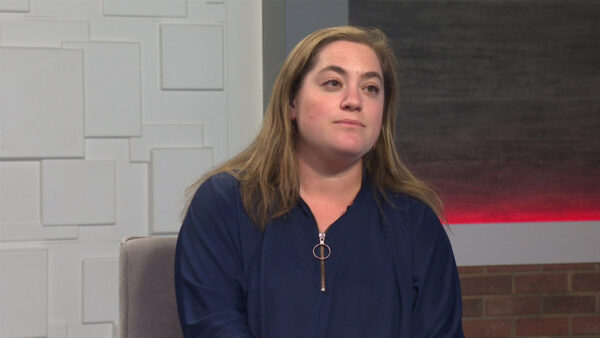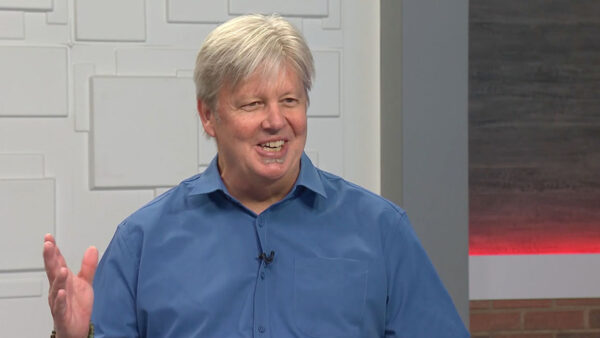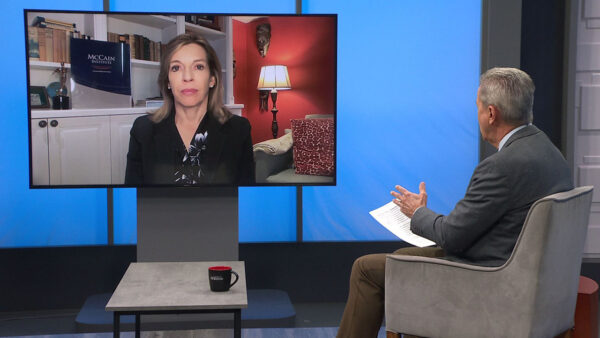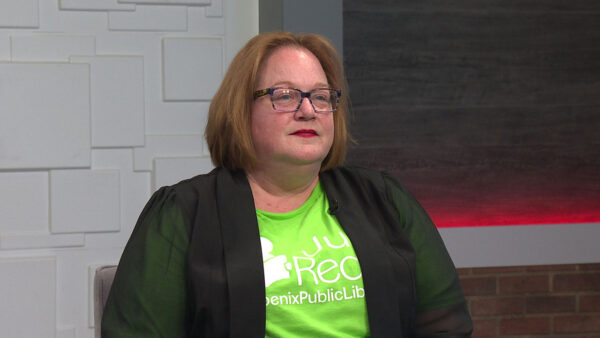The heart of Tempe’s public transportation infrastructure is gaining international attention for its world class sustainable design. Architect and Principal Planner for the city’s Transportation division, Bonnie Richardson, takes us on a tour of this award-winning building.
Ted Simons: All week long we've been looking at the benefits of green building. Tonight we take a look at a ward-winning sustainable building in Tempe.
David Majure: Outside the new Tempe transportation center, buses come and go. Trains arrive and depart, beam get where they need to go by road and rail, on two wheels or more. But buses, bikes and trains can't keep up with the environmental benefits of this building. It's a vehicle of change. One that's taking Tempe in a new, more sustainable direction.
Bonnie Richardson: We did computer modeling when we started the project and used that to figure out how to design the facade. How to develop the glass that we're using. What colors, how much. And we expect from that modeling to be -- reduce our energy footprint by 52%.
David Majure: Bonnie Richardson is the architect and principle planner for the city's transportation division and in charge of the team that designed the Tempe transportation center and they used the latest green building materials which should cut the building's energy bills in half.
Bonnie Richardson: We looked at all the strategies we could bring to this to lower energy because that's the biggest operating costs.
David Majure: One of those strategies is a green roof.
Bonnie Richardson: There are plants on the roof so we can run our building as energy efficiently as possible. What you see are four different types of desert plants. They require very little water.
Bonnie Richardson: This is the first that's a desert green roof. The primary thing it does is insulate the building.
David Majure: The soil about a foot deep also filters rainwater the building collects. Nearby, a solar water heater and room for more photovoltaic panels. Sunshine is a key ingredient to the building's workspace, which often needs no additional light. When daylight is too intense, a solar veil moves into position, protecting the building's eastern exposure.
Bonnie Richardson: This is our lobby area and we have a 12-inch space below the floor that serves at air supply for the offices. It reduces the amount of energy it takes to deliver cool air or heat in the winter.
David Majure: Earth-friendly materials also contribute to a comfortable non-toxic work environment. Throughout the building process, waste was kept to a minimum and whenever possible, recycled.
Bonnie Richardson: This is part of our recycled reassignage program. What you see are different pieces left over from building the building. We were able to reuse and divert 94% of the construction waste on this project from the landfill.
David Majure: Waste isn't the only challenge when building green. Regulations often don't keep up with new ways of doing things.
Bonnie Richardson: We have the first gray water system in Tempe in a commercial building. And we wanted to be able to use that gray water for plants on the roof. Due to overlapping regulations, be it from the state, the county, the city, we're unable to do that right now. We can do it, once the regulations are in sync.
David Majure: Which brings us to another important feature of the building. Its flexible design.
Bonnie Richardson: It's incredibly flexible. This can be reconfigured quickly.
David Majure: Office walls can be moved with ease.
Bonnie Richardson: This may not be a reception area some day so we can take it apart. And leasable retail and commercial office space is easily reconfigured.
David Majure: The building was eight years in the making.
Bonnie Richardson: I didn't know if we'd be able to do it.
David Majure: It came with a huge learning curve and challenges.
Bonnie Richardson: The main certain is financial. Using public funding wisely. And another was just a -- was this a fad?
David Majure: The building costs about $13 million.
Bonnie Richardson: The front end cost is higher than what you would do if you used a -- if we had gone with a standard building. Probably 2-3%, maybe 4% on this building. But again, this building was one of the first. We took a lot of time learning. The next building I suspect we'd be so much better prepared. It would be negligible about the front-end cost. We need to think about the life cycle cost of our building.
David Majure: Richardson says the Tempe transportation center was built to last 100 years. Long enough to prove that building green is more than a fad. It just may be the future.
Ted Simons: The Tempe transportation center has applied for LEED platinum certification from the U.S. Green Building Council. The center is still awaiting word as to whether or not it will achieve that highest rating.
Bonnie Richardson:Principal Planner, Transportation division,City of Tempe;























